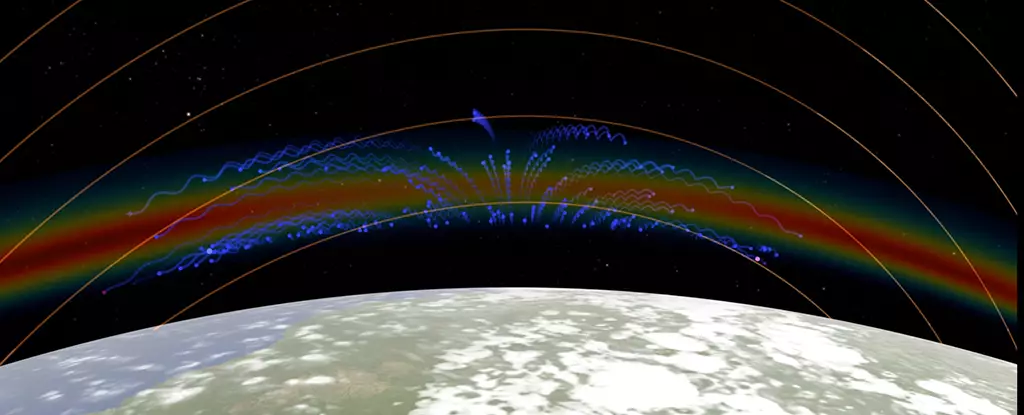In a groundbreaking discovery, NASA scientists have uncovered peculiar shapes in the ionosphere, shedding light on the mysterious dynamics of Earth’s upper atmosphere. The ionosphere, positioned approximately 48–965 kilometers (30–600 miles) above the Earth’s surface, has long been a subject of scientific fascination. However, the recent findings have unveiled unprecedented X and C shapes that challenge conventional understanding. These shapes, previously detected but now observed in greater detail using the GOLD imaging instrument, offer valuable insights into the complexities of our planet’s atmospheric processes.
The ionosphere, energized by solar radiation during the day, becomes infused with electrically charged particles known as plasma. These plasma bands, intricately intertwined with Earth’s magnetic field, give rise to crest-like formations and bubble structures that defy traditional explanations. While previous studies have associated such shapes with geomagnetically disturbed conditions following solar storms and volcanic eruptions, the latest data reveals their emergence even during periods of relative calm. This anomaly suggests that additional localized factors may be at play, complicating our understanding of atmospheric interactions.
Among the most perplexing observations are the C-shaped and reverse C-shaped bubbles discovered in the plasma. These distinctive formations, believed to be influenced by terrestrial winds analogous to a tree’s inclination under wind pressure, exhibit an unexpected proximity to one another. Some bubbles are found mere hundreds of kilometers apart, prompting speculation about the underlying mechanisms responsible for their configuration. Whether caused by wind shear, atmospheric disturbances, or other variables, these enigmatic C shapes challenge existing models of ionospheric behavior and warrant further investigation.
The presence of diverse plasma shapes in the ionosphere has significant implications for communication systems and satellite navigation. Radio waves, dependent on ionospheric plasma for propagation over long distances, are susceptible to disruptions caused by irregularities in the upper atmosphere. The anomalous formations identified by the GOLD instrument underscore the intricate interplay between atmospheric dynamics and technological infrastructure, highlighting the need for continuous monitoring and research in this field. By unraveling the complexities of the ionosphere, scientists strive to enhance our understanding of Earth’s interconnected systems and ensure the reliability of communication networks.
The latest findings in ionospheric research exemplify the ongoing advancements in technology and scientific inquiry that enable us to perceive the universe in new ways. By harnessing innovative instruments like GOLD, scientists can delve deeper into the mysteries of our planet’s atmosphere and uncover phenomena that challenge prevailing theories. The unexpected shapes observed in the ionosphere not only expand our knowledge of Earth’s complex environment but also underscore the evolving nature of scientific discovery. As technology continues to evolve, so too does our understanding of the intricate mechanisms governing the world around us, propelling us towards greater insights into the mysteries of the universe.



Leave a Reply